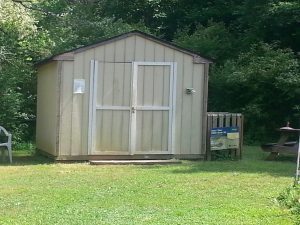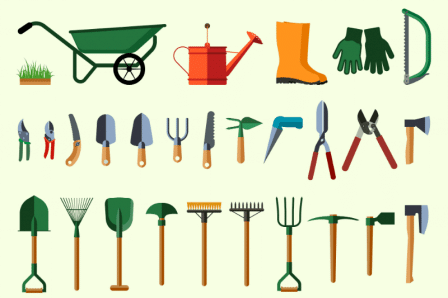For our next post on “tiny topics” I want to visit the topic of garden tools. It is easy to take our tools for granted. I have visited gardens where trowels and shovels are just left in the elements. They rust, become lost in garden debris, and blades become dull. Take some time during this slow garden season to evaluate, repair and clean your tools. Stocking the Garden Shed is a wonderful publication if you need guidance on adding to your tool shed.

It may be surprising to discover that how you use your garden tools can have an impact on disease management in the garden:
#1 Making improper pruning cuts or using a dull blade can damage plants and open up pathways for disease-causing organisms to enter your plant. Be diligent in your pruning skills and do not damage your plant. I have seen old pruners actually rip the bark off of a fruit tree because the cut wasn’t crisp. Keep those blades sharp.
#2 Using a tool on a diseased plant and then using that tool on another plant can spread disease, even if that tool is left for several days between uses. Bacteria, viruses, and fungal pathogens are easily moved and in part that count on that for survival. Fungal pathogens can produce structures called survival spores which can be viable for a long period of time. If you make a cut with pruners on a diseased plant or use a shovel to clean up diseased plant debris you could be unknowing transporting some of these spores to a clean, disease free plant.
It is worthwhile to disinfect your tools. Using a cleaning solution of 1 part bleach to 9 parts water is a recommended ratio for proper disinfection. You will find that getting into the routine of proper tool cleaning will be another piece of the puzzle in your integrated pest management system.
Happy Gardening!
- ParSLAY the Day! - June 12, 2024
- 6th Annual Great Southeast Pollinator Census - May 28, 2024
- Are you ready for Pepper Palooza? - July 5, 2023
